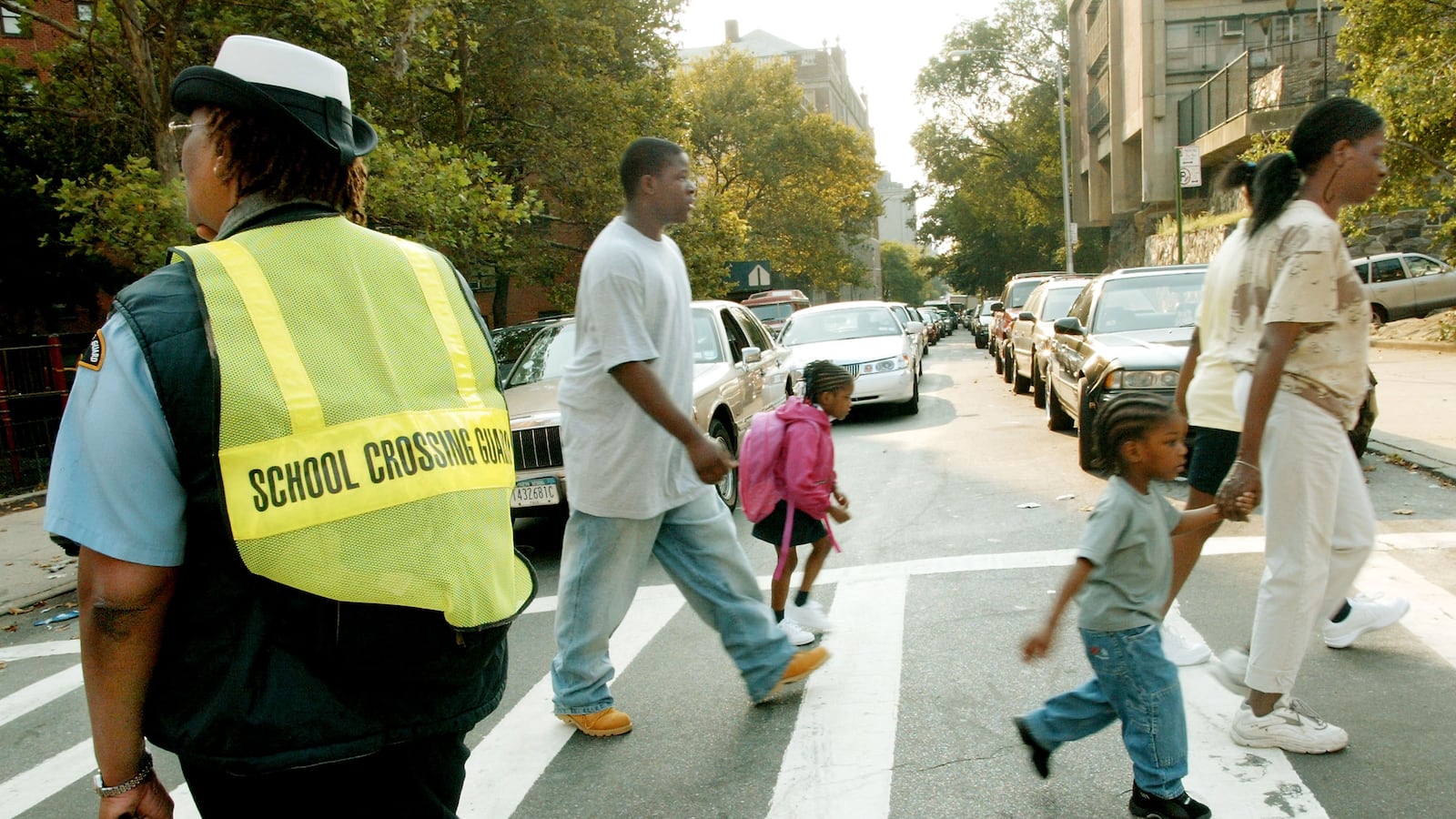This spring, the controversy surrounding the education department’s anti-bias training for New York City teachers had reached a boiling point.
While some educators and administrators bashed the sessions and Chancellor Richard Carranza for creating a culture that felt unwelcoming to white staffers, others gathered on the steps of education headquarters in an unusual show of support.
We at Chalkbeat wondered, outside of the extreme headlines and protests, how did people who took the training really feel? So we asked and heard from nearly 100 principals, teachers, administrators, and parents whose answers offered the clearest picture yet of how Carranza’s push was playing out in the place that matters most — inside schools.
With 1.1 million New York City school children returning to classrooms Thursday, Chalkbeat will continue turning to readers and being transparent about our work as we try to understand the city education department amid these promises of massive change. As Carranza calls attention to longstanding issues of inequity, to what extent will his rhetoric be accompanied by action? How much support does he have across the system — and in City Hall? And will the bold rhetoric and proposals change the realities in most classrooms, especially given the entrenched nature of segregation and the furious pushback from many quarters?
As we explore these topics, we’ll continue relying on you, our readers, to find answers to our burning questions and guide our reporting. So introduce yourself, send a tip, give us feedback or even propose a First Person essay by emailing us. Here are the storylines we plan to follow this year, and we promise to keep you updated about our progress. Stay tuned for information about in-person events and other opportunities to connect with our reporters.
School segregation, SHSAT, and beyond
The release of the School Diversity Advisory Group recommendations — including a bombshell proposal to eliminate gifted and talented programs as we know them — grabbed headlines last week. The uproar was reminiscent of that over Mayor Bill de Blasio’s now-stalled proposal to scrap the exam used to determine admissions to the city’s specialized high schools.
We’ve long covered issues related to diversity and segregation in city schools that are now catching some New Yorkers by surprise. As the new year begins, we’ll continue exploring all angles of these stories, diving deep into the advisory group’s recommendations and their potential impact, as well as exploring the integration efforts already underway in several districts. We’ll hold leaders accountable for the promises they are making about equity in education but also always elevate the voices of teachers, students, and parents at the center of the controversies. Reach out to our reporters — Christina Veiga, Alex Zimmerman, and Reema Amin — if you have thoughts.
Special education students and English Language Learners
Carranza has been calling attention to racial inequities in city schools, but other barriers baked into the school system affect some of the city’s most vulnerable students: those with disabilities and English language learners.
Students in special education and their parents face many hurdles that Alex has been chronicling. Evaluations for special education services are often delayed or don’t happen at all. Mandated services go unmet. And the formal appeal process is overwhelmed with a skyrocketing number of complaints. We’re collaborating with THE CITY, the non-profit news organization, to delve even further into these issues. (We started this week!) And Chalkbeat New York will hold a listening tour event later this month to hear straight from parents.
The plight of students learning English as a new language is a topic we’d like to explore more. We want to understand how schools can improve their academic outcomes, whether families’ immigration statuses are holding them back from seeking services, and how school communities support immigrant-rich student bodies. Have thoughts on these or other areas we should look at? Reach out to Reema.
Pre-K
The past year has been a monumental one for the city’s universal pre-K program. De Blasio frequently touts pre-K as he travels the presidential campaign trail. Christina chronicled the effort by teachers in community-based preschools — largely women of color — to earn the same amount as pre-K teachers at education department schools. And just last month, the test scores for the inaugural universal pre-K class showed that students performed slightly better than their peers.
But test scores are just one measure. This year, we’ll continue paying attention to the quality of pre-K programs and the impact the mayor’s signature education effort is having on children. Let Christina know if you have ideas about this.
Charter schools, lead in schools — what else?
To be sure, the above list barely scratches the surface of the topics we plan to monitor over the next school year and beyond. We’ll also be paying close attention to charter schools in the wake of the state’s decision to cap the sector’s growth in NYC. We’ll continue following the remediation of classrooms found to have deteriorating lead paint. We will keep digging into changing school discipline policies and how they affect students. We’ll continue to follow state education policy and how decisions made in Albany affect New York City schools; this year, the state’s Board of Regents will launch a major discussion on what diploma requirements should look like and whether to scrap the vaunted Regents exams. We’ll watch out for curriculum news and important studies about teaching and learning. What are we missing? Let us know!

